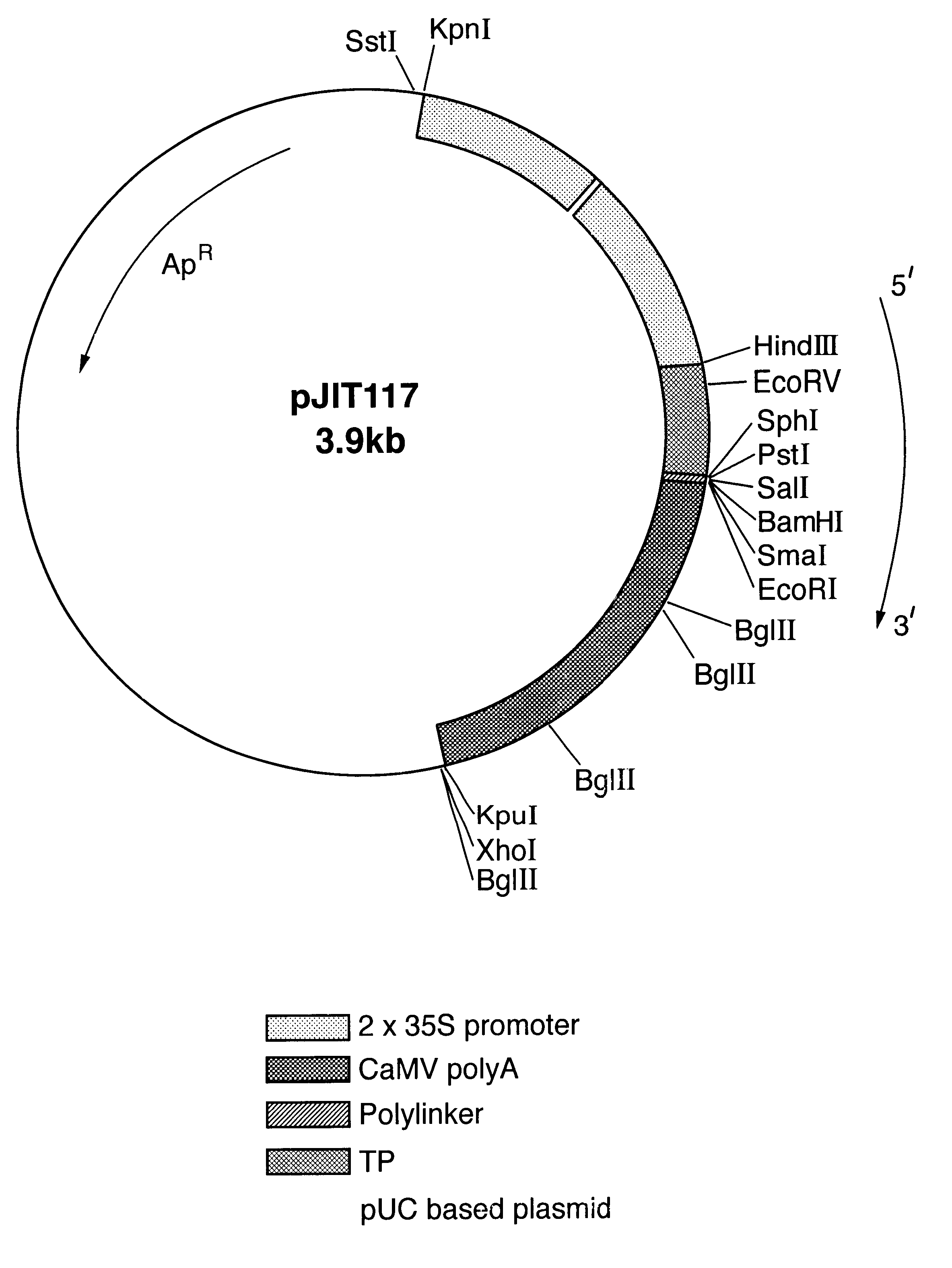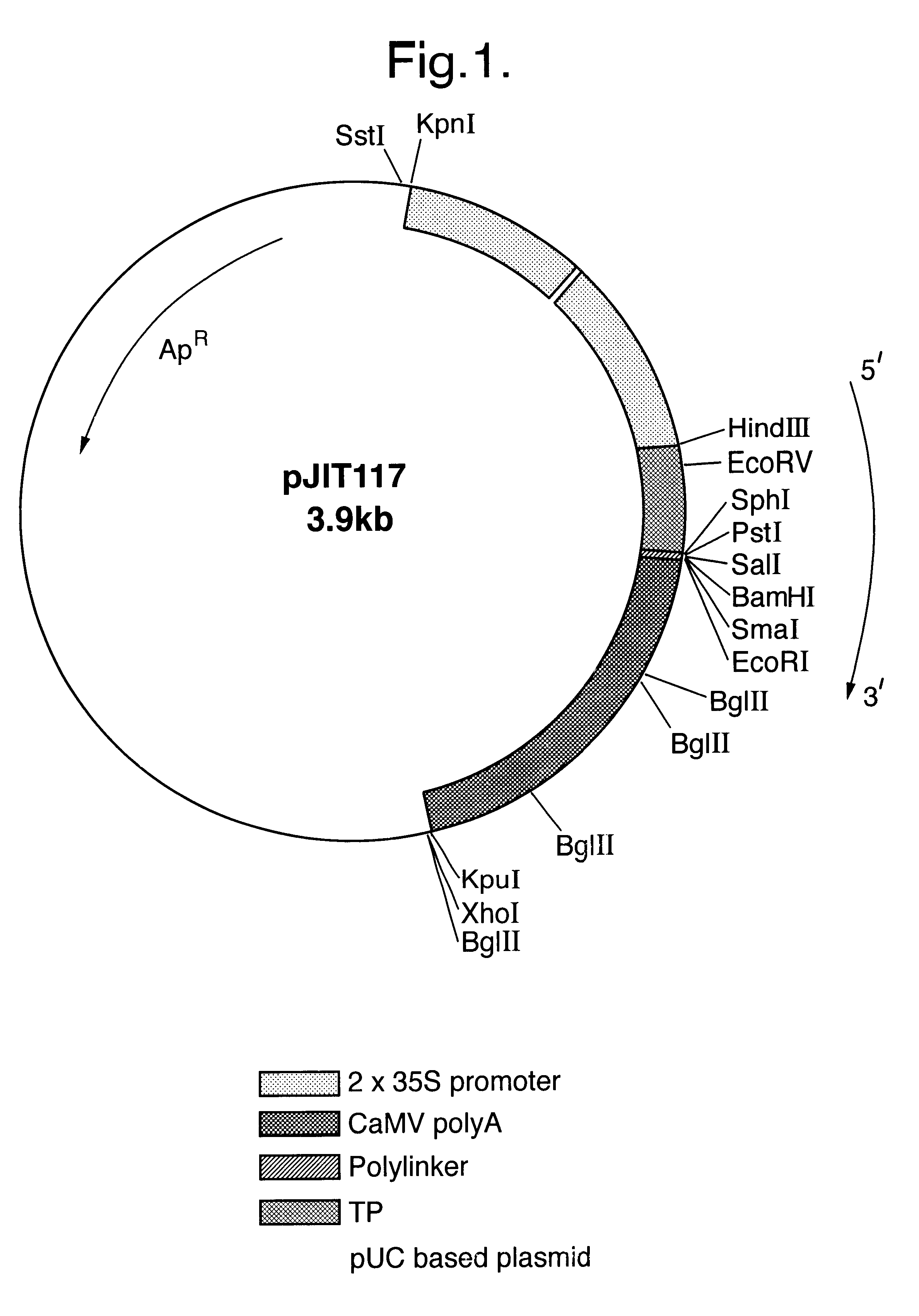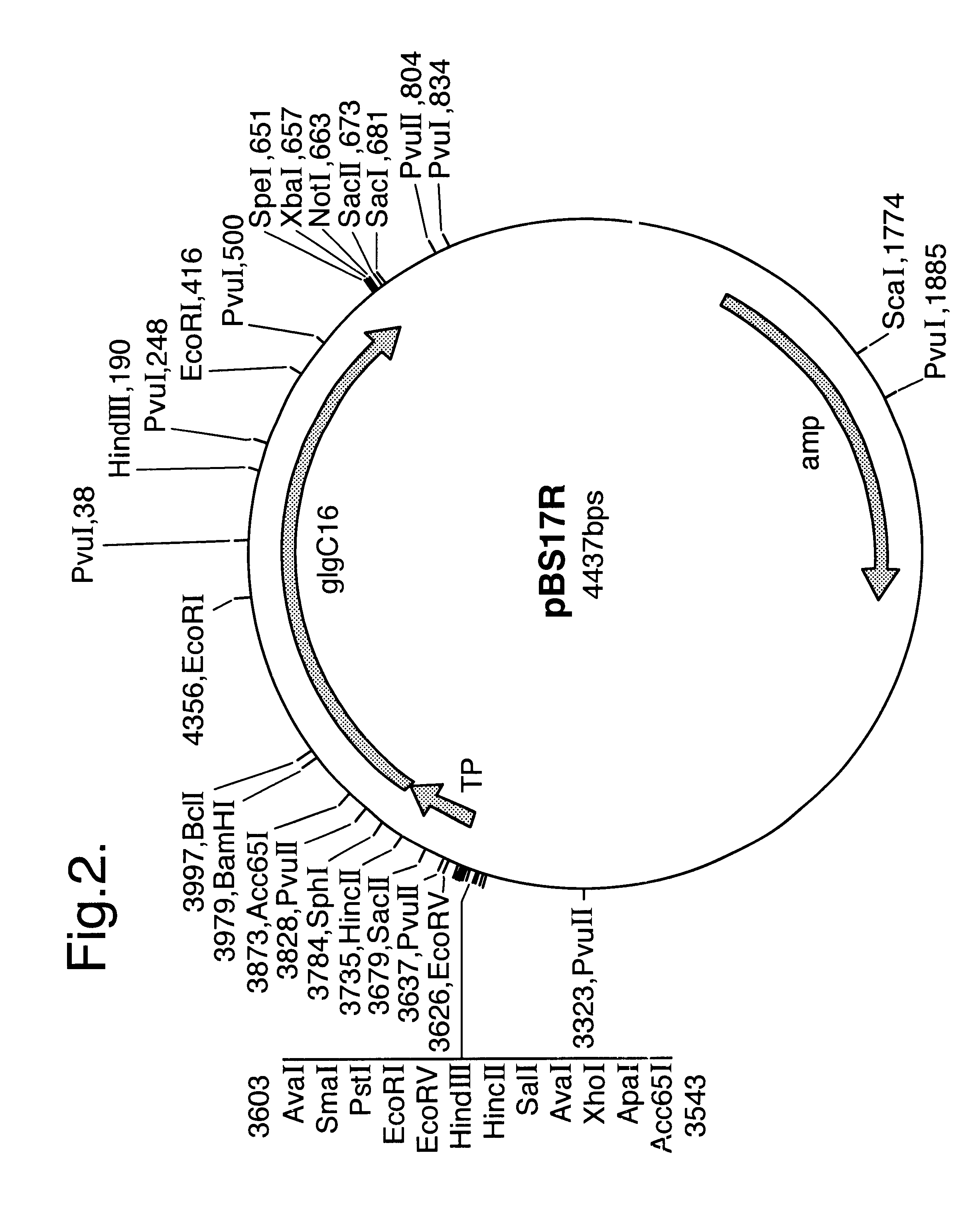Genetically modified plants with altered starch
a technology of modified starch and plant products, applied in the field of genetically modified plants, can solve the problems of affecting the suitability of processing, affecting the quality of the processed plant product, and affecting the gross yield and processing efficiency
- Summary
- Abstract
- Description
- Claims
- Application Information
AI Technical Summary
Problems solved by technology
Method used
Image
Examples
example 1
ion of glgA Plasmids Used for Particle Bombardment of Wheat Embryos
6.1.1. Isolation of E. coli Chromosomal DNA
The coding sequence for glgA was originally isolated by PCR using chromosomal DNA from the E. coli strain LCB618 as template. E. coli LCB618 was obtained from E. coli Genetic Stock Center. Yale University, U.S.A.
E. coli LCB618 was grown up in 100 ml LB o / n at 37.degree. C. Cells were pelleted and re-suspended in 9.5 ml 10 mM Tris-HCl, 1 mM EDTA (TE) pH 8.0 and 0.5 ml 10% w / v Sodium dodecyl sulphate (SDS) and 50 ul proteinase K 20 mg / ml were added. The mixture was incubated at 37.degree. C. for 1 hour to lyse cells. 1.8 ml of 5 M NaCl followed by 1.5 ml of CTAB (cetyl trimethyl ammonium bromide) / NaCl solution (10% w / v CTAB in 0.7 M NaCl) were added and the mixture incubated at 65.degree. C. for 20 minutes. The lysate was extracted with an equal volume of chloroform and centrifuged at 6,000 g to separate the layers. The upper layer was removed to a fresh tube and DNA was preci...
example 2
al Analysis of glgA Transformed Maize
6.2.1. Expression of glgA Protein
Soluble protein samples were prepared from individual maize grain derived 30 from transformed maize plants. Each grain was pulverized in a pestle and mortar until a fine powder was obtained. A portion of this powder (100-200 mg) was placed in an Eppendorf tube and 500 ul of ice cold extraction buffer (50 mM HEPES, pH 8.0; 10 mM DTT; 10 mM EDTA) added. The powder was homogenized with a micropestle to release soluble proteins.
The extract was centrifuged at 13,000 rpm for 1 minute and the supernatant decanted into a fresh Eppendorf tube and stored on ice. The total protein content in the soluble protein sample was assayed using The Bradford dye binding method (Bradford, M. 1976).
An aliquot of the soluble protein sample containing 100 mg total protein was placed into an Eppendorf tube and excess acetone (ca. 1.5 ml) was added to precipitate the proteins. The proteins were collected by centrifuging the sample at 13,000...
example 3
nts Transformed with glgA Recombinant Gene
In the transformation step, immature maize embryos are used instead of wheat and are subject to particle bombardment with gold particles coated with plasmid DNA. Methods for the transformation of maize are well known in the art, for example see Gordon-Kamm et al., (1990) and Fromm et al., (1990).
After rooted primary transformant plants (To) are transferred to soil and grown to maturity, maize plants are back-crossed to produce transgenic seed which can be extracted and analyzed according to Example 2. Further back-crossing is performed to introgress the transgene into elite varieties and self ing of transgenic plants is performed to obtain plants and seed which are homozygous for the transgene. Seed from these generations can also be extracted and analyzed according to method 2.
Seed from a number of back-crossed primary transformants were shown to be expressing the glgA protein. The plants grown up from the remaining seeds were subsequently ...
PUM
| Property | Measurement | Unit |
|---|---|---|
| pH | aaaaa | aaaaa |
| pH | aaaaa | aaaaa |
| volume | aaaaa | aaaaa |
Abstract
Description
Claims
Application Information
 Login to View More
Login to View More - R&D
- Intellectual Property
- Life Sciences
- Materials
- Tech Scout
- Unparalleled Data Quality
- Higher Quality Content
- 60% Fewer Hallucinations
Browse by: Latest US Patents, China's latest patents, Technical Efficacy Thesaurus, Application Domain, Technology Topic, Popular Technical Reports.
© 2025 PatSnap. All rights reserved.Legal|Privacy policy|Modern Slavery Act Transparency Statement|Sitemap|About US| Contact US: help@patsnap.com



